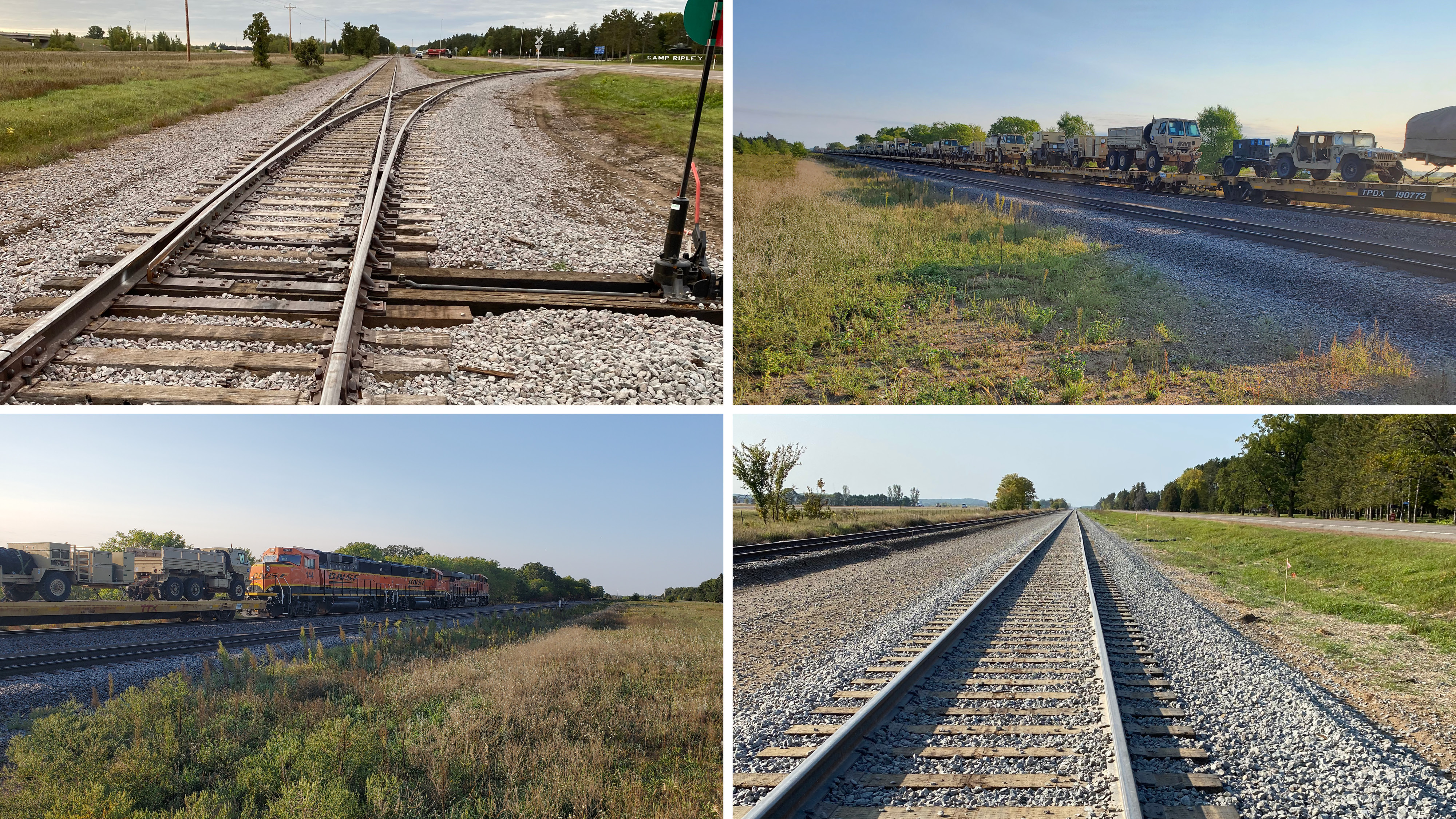Challenge
Previously, when a train left Camp Ripley, a 53,000-acre military and civilian training facility operated by the Minnesota National Guard, there was a waiting period of 4-6 hours before another train arrived and was ready to be loaded as there was only one track with no passing ability. Adding to this complexity, Camp Ripley did not have areas for pre-staging cars. Crossovers, a set of switches that link two parallel railway tracks, enabling a train on one track to switch to the adjacent one, only allowed for approximately 20 cars to be run around. Because of this, a majority of movements were shoved, or pushed from behind, out of Little Falls. With BNSF railway crews limited to 12 hours of Federal Railroad Administration (FRA) service time, they typically timed out before they were able to make a second move.
The number of railcars requiring movements to Camp Ripley required BNSF to shove railcars 9 miles from Little Falls to Camp Ripley, which limited the length and speed of the trains, inhibiting Camp Ripley’s mission-meeting requirements.

Solution
SEH provided design and construction support services for a new railroad siding, a short length of track that branches off from the main railway line and provides a designated area for trains to be parked, stored, or loaded/unloaded away from the main track. SEH engineers coordinated with BNSF Railroad, Morrison County, Oneok Pipeline, CenturyLink, and the Minnesota Department of Military Affairs (MNDMA) to complete more than a mile of siding track for staging military equipment being brought to and from Camp Ripley. This new track met Camp Ripley's goal of reducing the time required to stage and ship equipment. The result is a decrease in loading time by 75%.
The project included:
- 6,700 ft. siding
- Increased total capacity to 65 cars
- Increased car storage capacity by 110 cars
Additionally, the north leg of the Wye, an arrangement of tracks where three lines meet that form a "Y" shape, was rehabilitated by replacing cross ties, adding ballast, and repairing existing turnouts which added about 3,200 ft. of usable track that had previously been out of service.
The outcome is a more efficient railroad system that is crucial to supporting the Minnesota National Guard’s mission requirements of getting tanks and equipment shipped as quickly as possible.
Project
Camp Ripley Railroad Siding
Location
Little Falls, Minnesota
Client
Minnesota Department of Military Affairs
Features
- 4,600 ft. of track rehab
- Two mainline turnouts
- 190 ft. of timber crossing panels
- 14,000 cu. yd. of grading
- 4,000 cu. yd. of gravel
- High pressure gas pipeline crossing
- Service time cut in half by 75%
- Successful stakeholder coordination between BNSF Railroad, Morrison County, and the MNDMA
- Reduced time required to stage and ship equipment
Services
- Track design
- Utility coordination
- Civil engineering
- Grading and drainage design
- Construction administration
- Topographic survey

.png?width=113&name=SEH_Logo_RGB%20(1).png)
